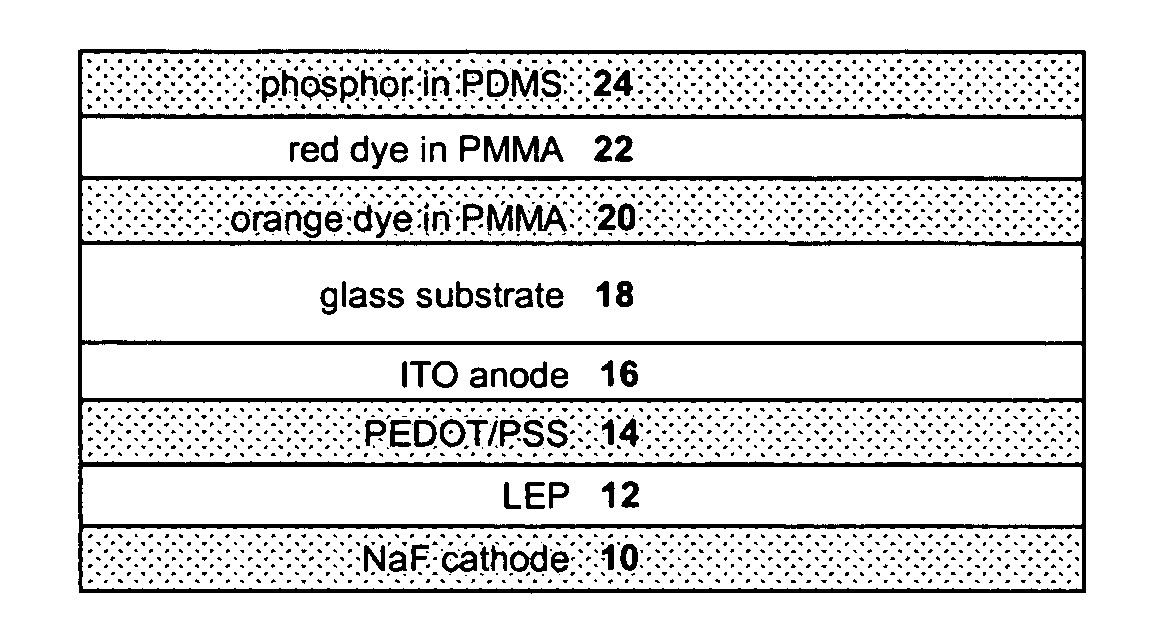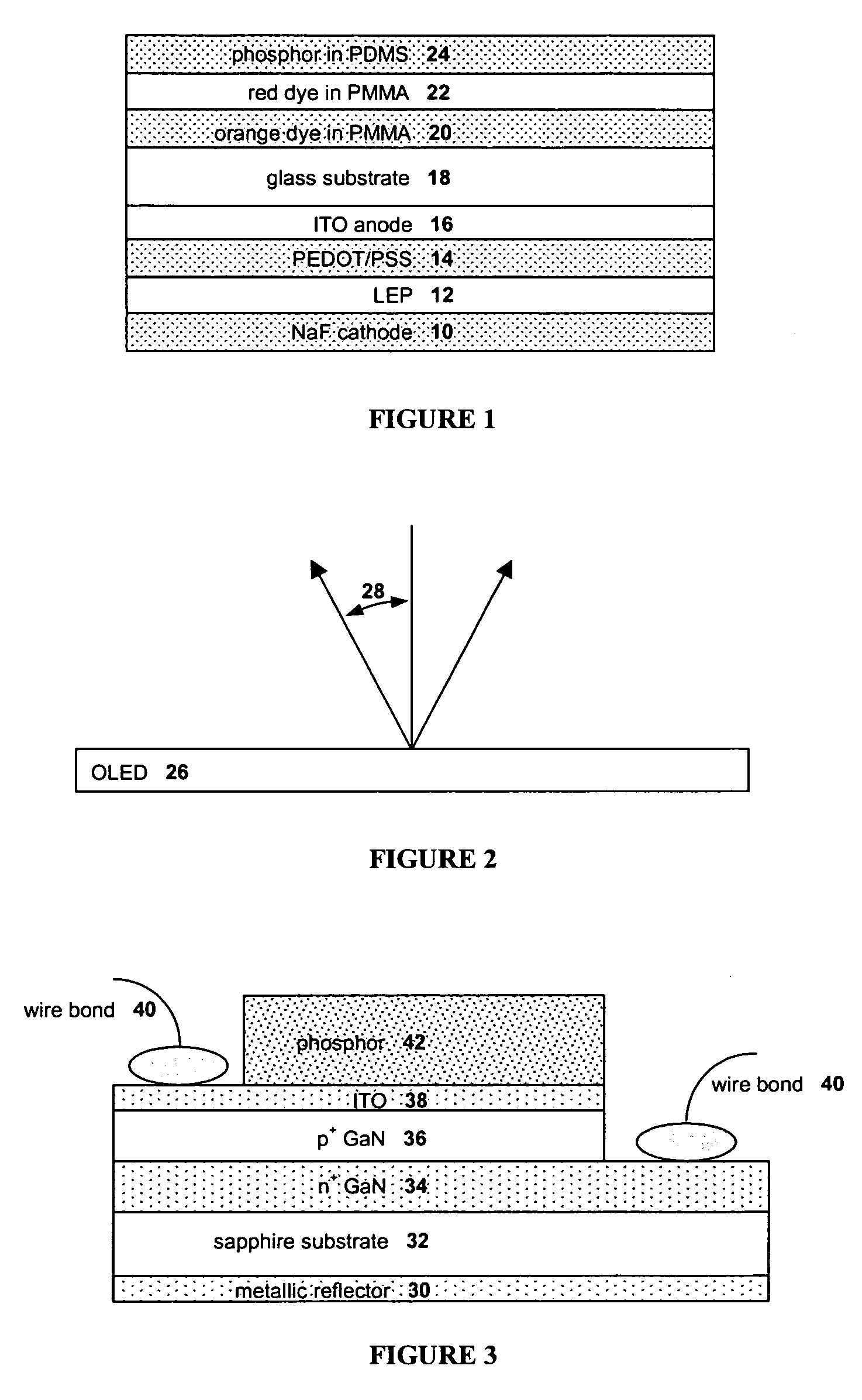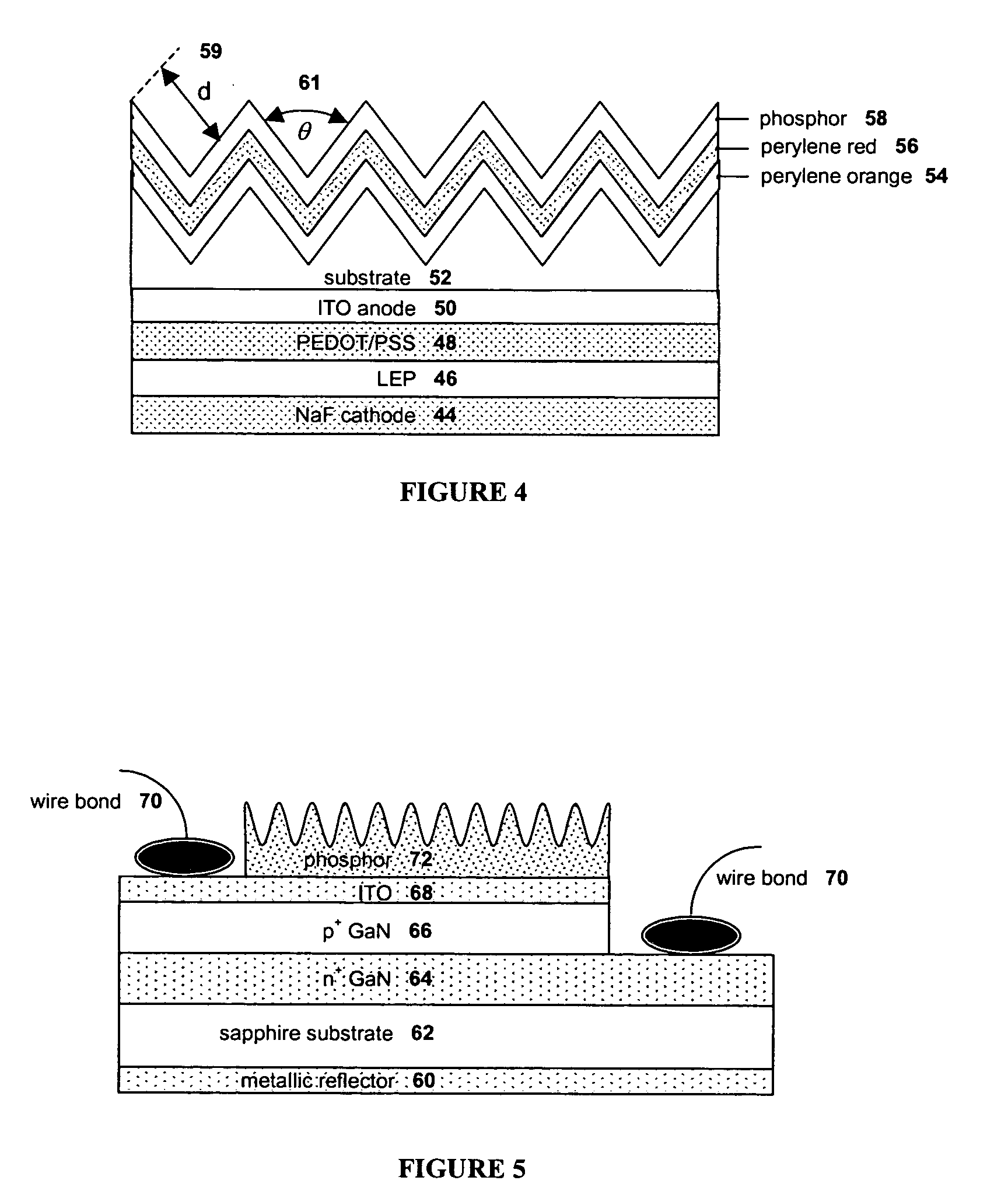Luminance enhancement apparatus and method
a technology of luminance and apparatus, applied in the field of illumination, can solve the problems of reducing the efficiency of an oled, and reducing the ratio of converted light to incident light, and achieve the effect of enhancing luminan
- Summary
- Abstract
- Description
- Claims
- Application Information
AI Technical Summary
Benefits of technology
Problems solved by technology
Method used
Image
Examples
Embodiment Construction
Definitions
[0039] The term “light-emitting element” is used to define any device that emits radiation in the visible region, or any other region of the electromagnetic spectrum, when a potential difference is applied across it or a current is passed through it, for example, a semiconductor or organic light-emitting diode, quantum dot light-emitting diode, polymer light emitting diode or other similar devices as would be readily understood.
[0040] Unless defined otherwise, all technical and scientific terms used herein have the same meaning as commonly understood by one of ordinary skill in the art to which this invention belongs.
[0041] The present invention provides a luminance enhancement apparatus and method for use with light-emitting elements comprising a conversion system adjacent to the light-emitting element for converting electromagnetic radiation of one or more wavelengths to alternate wavelengths. This conversion process can be enabled by the absorption of radiation wit...
PUM
| Property | Measurement | Unit |
|---|---|---|
| angle | aaaaa | aaaaa |
| angle | aaaaa | aaaaa |
| angle | aaaaa | aaaaa |
Abstract
Description
Claims
Application Information
 Login to View More
Login to View More - R&D
- Intellectual Property
- Life Sciences
- Materials
- Tech Scout
- Unparalleled Data Quality
- Higher Quality Content
- 60% Fewer Hallucinations
Browse by: Latest US Patents, China's latest patents, Technical Efficacy Thesaurus, Application Domain, Technology Topic, Popular Technical Reports.
© 2025 PatSnap. All rights reserved.Legal|Privacy policy|Modern Slavery Act Transparency Statement|Sitemap|About US| Contact US: help@patsnap.com



